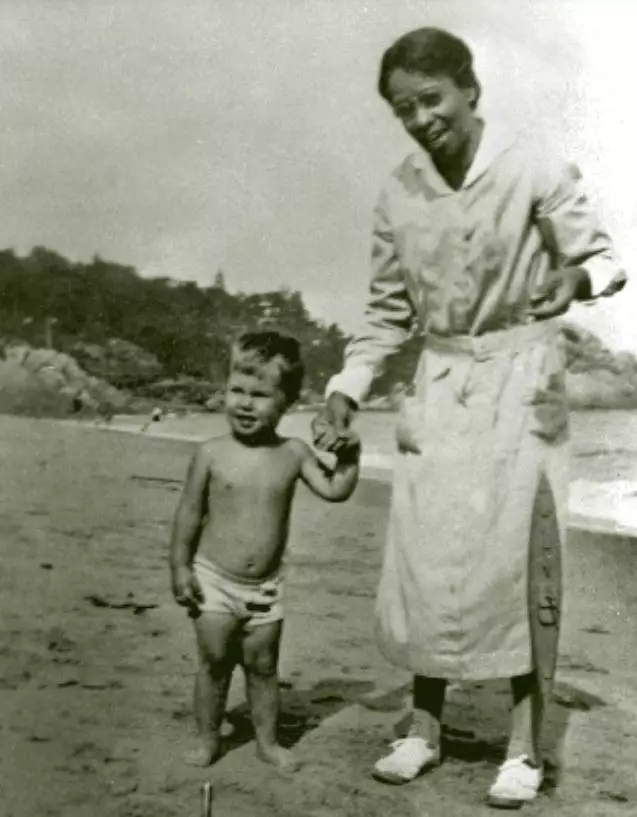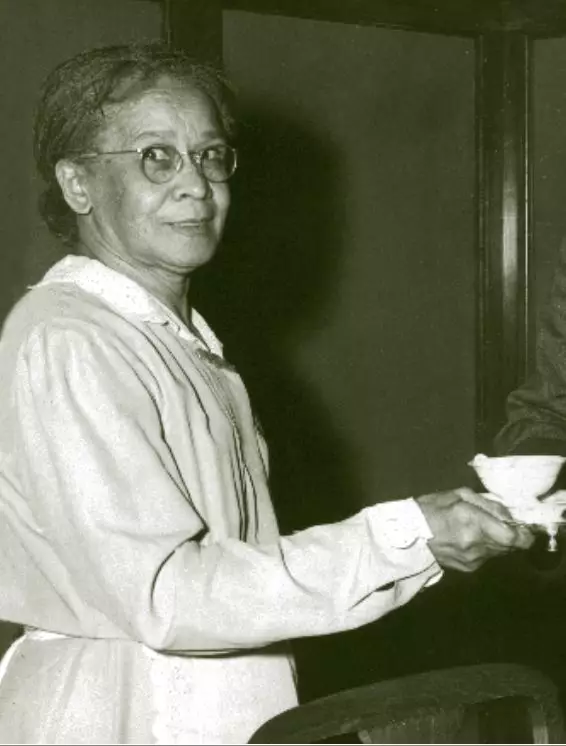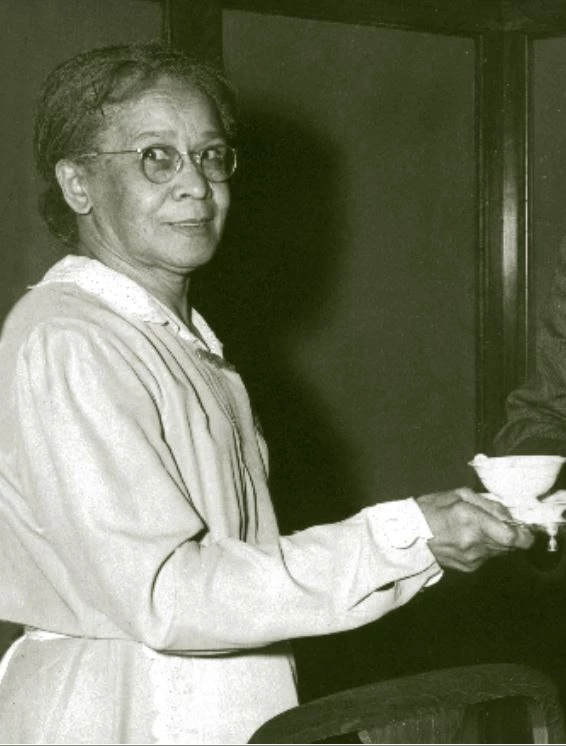Service Providers
Before the 1950s working as a domestic servant was one of the few jobs available to African American women.Featuring:Alverta Duff, (1885 – 1968), African American, housekeeper and nannyAlbin B. Kron, (1890 – 1958), mail delivery personAlverta Duff (1885–1968) was a well-educated African American for the time, having graduated from Normal High School in 1902 and attended Brown’s Business College. Regardless of her education, few would hire her except to do work as a cook or housekeeper.
Around 1910 Alverta was hired by Lewis and Helen Davis Stevenson. She cared for their son Adlai II and daughter Elizabeth (Buffy). Alverta had an attic room in the Stevenson home on East Washington Street, but she did not always stay there. Good at her work and well liked, Alverta was also hired by the Loring Merwin family and later by Buffy (Mrs. Ernest Ives) when she and her husband took over the family home.
When the Stevenson family made their annual trips to Florida and Michigan, Alverta frequently accompanied them. While there she took care of Buffy and Adlai. Eventually she accompanied them to take care of Adlai and Buffy’s children.
In 1948 Buffy hired Alverta to prepare and serve homemade cookies, biscuits, hot tea, and coffee at an important reception for Adlai, who was a candidate for Illinois Governor at the time.
Alverta was also hired for receptions at the Ives home during Adlai’s 1952 and 1956 presidential campaigns.
Adlai was fond of Alverta, sometimes mentioning her in his correspondence. He occasionally wrote to her.
During Adlai II’s 1952 presidential campaign Alverta told him . . .
“If they don’t make a good cup of coffee at the White House, you let me know and I’ll come make some coffee for you.”
— Alverta
Maid's uniform, circa 1948
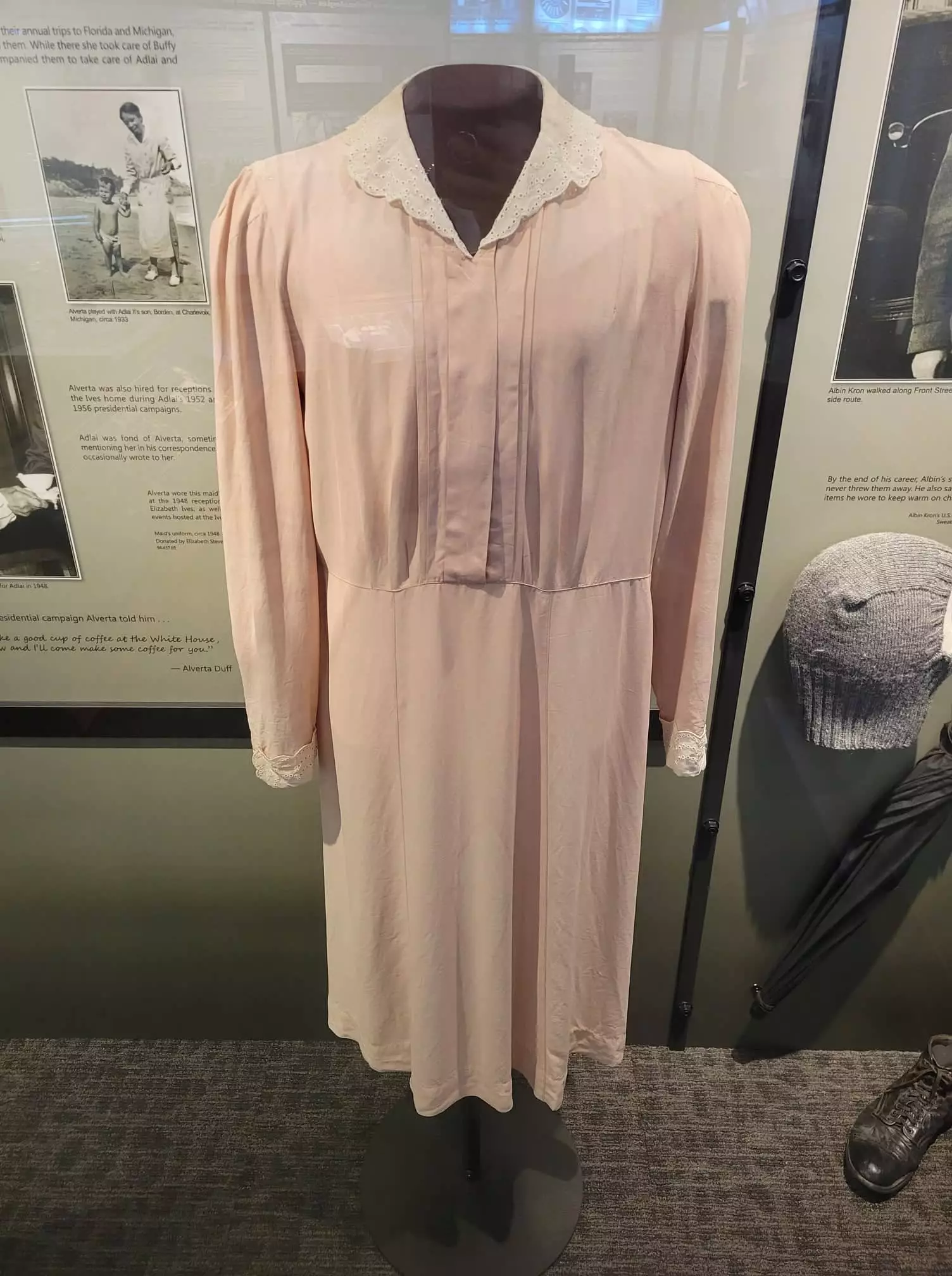
View this object in Matterport
Alverta wore this maid’s uniform at the 1948 reception held by Elizabeth Ives, as well as other events hosted at the Ives home.
Donated by: Elizabeth Stevenson Ives
94.437.69
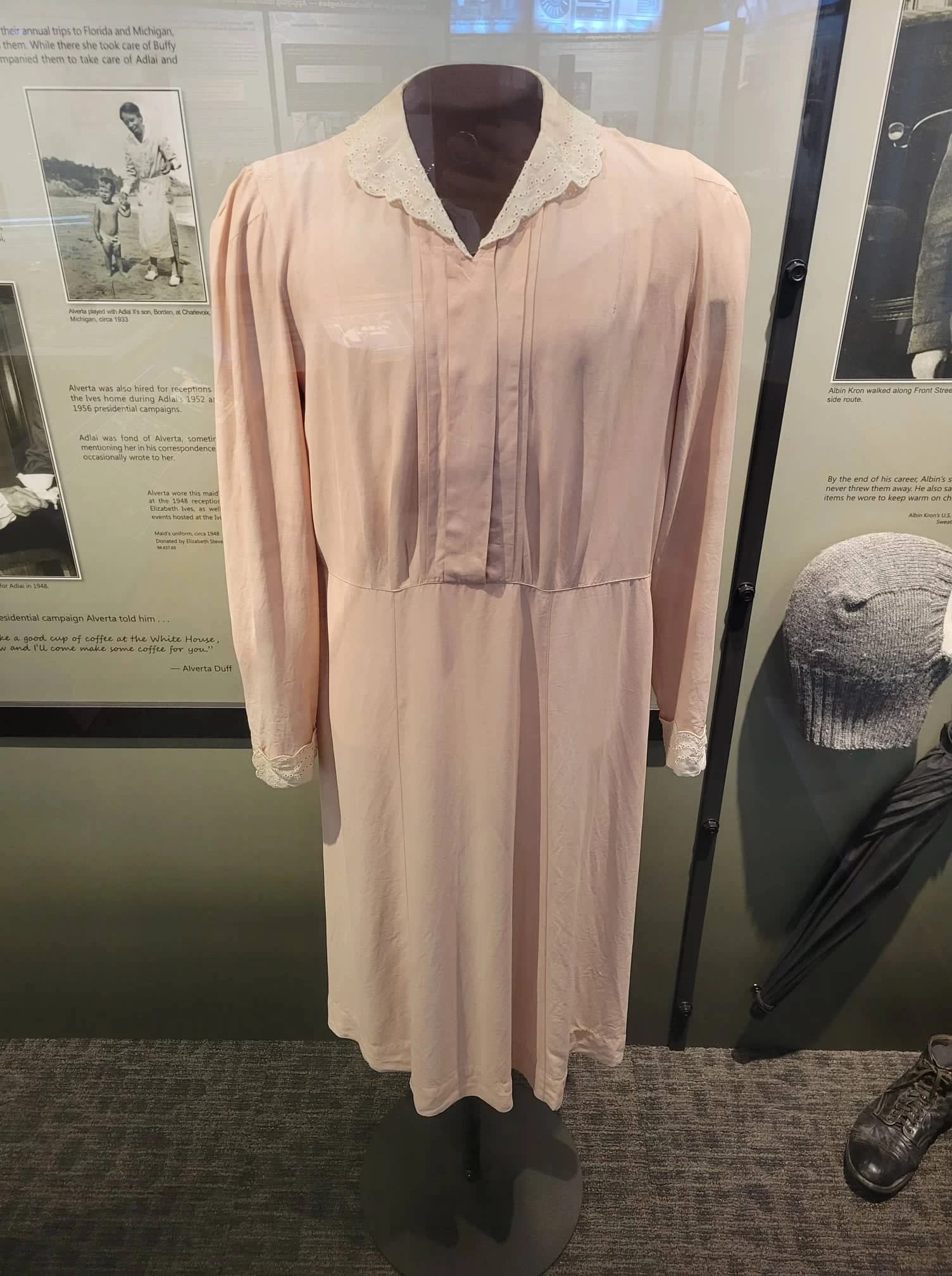
Delivering the mail was a person-to-person job.
As a youth Albin B. Kron (1890-1958) apprenticed for 10 years with a Bloomington tailor. But after his service in WWI, Albin opted for a job with the U.S. Postal Service.
During Albin’s early years, mail delivery often took hours as person-to-person delivery was required. If the addressee did not come to the door, Albin had to return later, maybe even the next day, in order to hand the mail directly to the recipient.
What common practice brought an end to person-to-person delivery?
Beginning in 1923 the postal service required mail recipients to install mail slots or boxes at their home in order to receive mail, thereby ending person-to-person delivery.
Albin predominately worked Bloomington’s east side, delivering mail to his customers twice a day until 1950, when service was reduced to once a day. For 11 of his years as a postal worker, Albin was kept company by a neighborhood dog, “Lucky,” who followed him from house to house.
Albin suffered a heart attack in 1954 and retired shortly after that, having delivered the U.S. mail for 37 years.
Albin Kron’s U.S. Postal Service cap and umbrella, Sweater vest, mitts, leggings, and cap, circa 1950
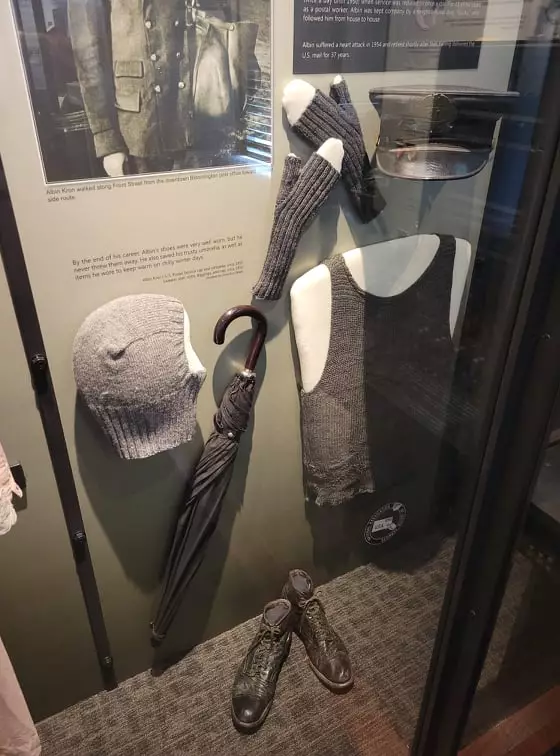
View this object in Matterport
By the end of his career, Albin’s shoes were very well worn, but he never threw them away. He also saved his trusty umbrella, as well as items he wore to keep warm on chilly winter days.
Donated by: Doris Kron Brady

 Making a Home
Making a Home
 A Community in Conflict
A Community in Conflict
 Working for a Living
Working for a Living
 Farming in the Great Corn Belt
Farming in the Great Corn Belt
 Abraham Lincoln in McLean County
Abraham Lincoln in McLean County


